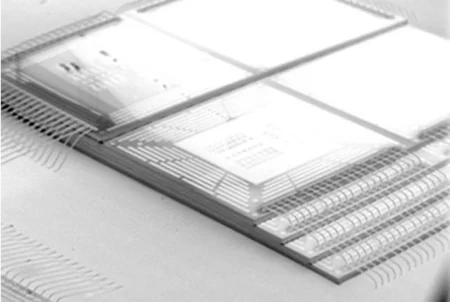- Details
-
Features and characteristics
▎The new platform uses brand new X, Y, and Z motors to achieve high-speed welding of 42ms/0.7mm (45ms/2mm)
▎Equipped with a welding head that can handle a high load of 1,000gf and a high-rigidity transducer rod, it achieves high-quality welding that can handle a variety of components
▎ EFU power supply can support wire diameters of φ18μm to φ50μm without replacing components
▎Ensures a 95mm Y welding area and can transport 102mm×300mm frames
▎The electrostatic voltage of the AC cold solder joint detection function is 1pF, making the welding abnormality detection more accurate.
▎Automatically set the initial ball diameter function to make welding conditions easier to set
▎Can correspond to X-direction synchronous recognition and Y-direction synchronous recognition
▎Effective lighting color (red/blue) can be set to improve detection rate
▎Using Xinchuan ICP multi-line arc mode technology, it can correspond to the different line arcs of various components
▎The stacker method is used to lift the material box, which can handle large material boxes.
Improved Z calibration method to make maintenance easier
▎Can support copper wire and silver wire welding (optional)
▎Can correspond to a wider range of handling processes (open feeder/closed fixed feeder, etc.)
Application Scenario
Capillary Wedge Bonding (CWB)
NAND flash memory is widely used in memory media from USB storage to cloud servers. In order to increase the capacity, multiple chips are usually welded together. The signals of the multi-segment overlapping chips are transmitted by the welded metal thin wires. Generally speaking, welding the corresponding number of segments and repeatedly cutting the welding wires is a very time-consuming and laborious task, which has become a bottleneck for improving productivity.
In response to this, Shinkawa has developed Capillary Wedge Bonding (CWB) technology, which can continuously weld multiple segments without cutting the metal wire. Through this technology, it is expected to shorten the single-piece working time with an absolute advantage. Shinkawa will continue to improve this technology in order to enable more customers to use it.

From "Connection" to "Processing and Creation" Wire Bonding Machine as Electronic Component Manufacturing Machine
Wire bonders are widely used devices for connecting metal wires that can conduct electrical signals. There is still room for further development.
From a large number of "connection" experiences, it is known that metal wires can be arbitrarily controlled. By effectively utilizing this characteristic, it is possible to realize the production of coils, which are important components of electronic components, and ultimately achieve the evolution of electronic component manufacturing equipment. For example, a specific number of coils can be produced, and supplementary coils can be produced for the purpose of loop adjustment.
Shinkawa will continue to make new attempts and challenges now and in the future based on wire bonders.BIM: Bond Inspection Measurement (bond ball position detection function)
BIM is a function that calculates the offset of the welding position from the image after welding, and then performs welding position correction. It corrects the position offset caused by various changes during welding in real time, and pursues the stabilization of welding accuracy.


FAM: Free Air ball Measurement (initial ball automatic monitoring function)
FAM is Shinkawa's own function that stabilizes the initial ball shape by monitoring the diameter and shape of the initial ball of the welding wire. For inspection, this function called Reference Positioning System (RPS) can be effectively used to take a picture of the position of the front end of the splitter. This is also a function that supports the high-reliability welding of the UTC-5000 series.
